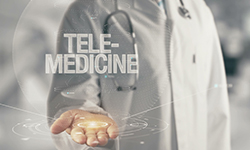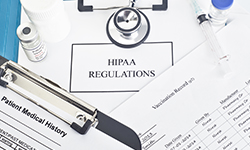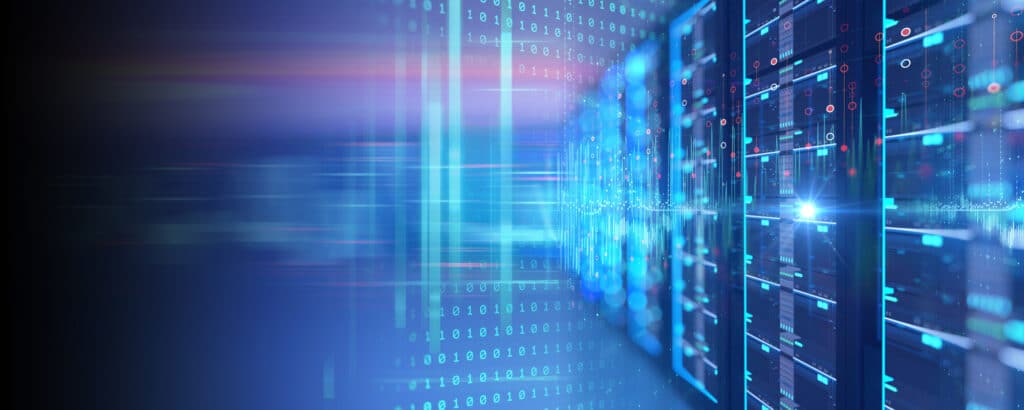
The health care industry has been revolutionized by the universal adoption of electronic health records (EHRs). Now entire patient medical histories are digitized and stored for reference. Complex medical scans can be stored efficiently and analyzed.
Not only have EHRs changed the way medical information is stored, accessed, and processed, but they also have transformed the way health care providers communicate with patients and each other. When information is digitized, patients have greater access to treatment and gain the power to be more informed and proactive about their health. Health care providers can more readily share information to reach diagnoses and perform treatments.
When health care organizations use unified communications (UC), they amplify their ability to transmit, share, and act on patient information.
Here is a closer look at 5 ways unified communications can be used in health care:
1) Telehealth and Telemedicine
 Telehealth and telemedicine use information technology and telecommunications to increase access to health care services and training. With telemedicine, patients who live in remote areas or are homebound gain access to expert care. Telehealth provides caregivers with training, support, and the opportunity to hold administrative meetings using a variety of communication tools.
Telehealth and telemedicine use information technology and telecommunications to increase access to health care services and training. With telemedicine, patients who live in remote areas or are homebound gain access to expert care. Telehealth provides caregivers with training, support, and the opportunity to hold administrative meetings using a variety of communication tools.
UC provides the tools needed for telemedicine and telehealth services. Videoconferencing allows doctors to conduct diagnoses over a mobile device, without needing to see the patient in person. Live streaming and the Internet empower medical experts to conduct training sessions with health care professionals wherever they are located. Instant messaging enables real-time conversations between doctors and patients.
2) Caregiver Collaboration
Doctors in remote areas may not have access to specialists when making patient referrals. First responders are routinely in situations where they have to make lifesaving decisions in the field without the help of a doctor.
UC allows primary care physicians, EMTs, and nurses to collaborate with other health care providers so they can act quickly and appropriately. Doctors can use video conferencing to confer face-to-face with specialists or consult fellow physicians for guidance during medical procedures. EMTs can use mobile devices to consult with doctors back at a hospital through voice or text for real-time advice on how to proceed with treatment.
An extreme case of this type of collaboration occurred back in 2011 when a staff doctor at the South Pole found a lump on her breast but could not be evacuated for diagnosis and treatment. Instead, she used audio and video equipment that was airlifted in to perform a biopsy on herself. She then sent the images to the U.S. for analysis. After consulting with a pathologist by teleconference, she administered her own chemotherapy and was eventually evacuated for further treatment.
3) Patient Care Flow
 Patients get frustrated with long wait times. No one wants to spend time stuck in a doctor’s waiting room or in a hospital bed.
Patients get frustrated with long wait times. No one wants to spend time stuck in a doctor’s waiting room or in a hospital bed.
With UC, doctors can send and receive alerts and notifications through instant messaging, streamlining clinic and office visits. At a hospital, coordinated communication between staff members can shorten a patient’s stay and free up beds more quickly. Patients can use a portal to schedule appointments, order prescriptions, and pay bills. Some hospitals even post wait times.
4) Real-time Information Access
In a medical emergency, every second counts. What takes place in the first minutes after an injury can make the difference between life and death. Out in the field, first responders don’t have access to a patient’s medical history and face the challenge of communicating information about the patient’s status to doctors at the hospital.
UC allows for the secure transmission of medical information. Medical records can be encrypted to prevent violation of the patient’s privacy while still enabling health care providers to easily access current and accurate information. Doctors and EMTs can use file sharing to look at medical scans and doctor’s notes.
5) Compliance
 Health care is one of the most heavily regulated industries. Maintaining compliance is essential for protecting patient privacy and preventing costly and harmful medical fraud. HIPAA regulations demand that health care providers control access to EHRs. Health care organizations must protect EHRs from unauthorized access while allowing patients free access to their own medical information.
Health care is one of the most heavily regulated industries. Maintaining compliance is essential for protecting patient privacy and preventing costly and harmful medical fraud. HIPAA regulations demand that health care providers control access to EHRs. Health care organizations must protect EHRs from unauthorized access while allowing patients free access to their own medical information.
UC enables hospitals and medical centers to maintain the balance between security and accessibility. Patient data can be protected ― at rest and in transit ― via encryption and user authentication measures. When choosing a UC provider, health care organizations should look for one that has experience working in their industry and understands HIPAA compliance standards for telecommunications.
Realizing the Benefits of UC
Applying UC to health care brings many benefits to both patients and health care workers. UC increases access to health care information and treatment services. Hospitals and medical centers save money and improve patient outcomes through streamlined processes.
FirstLight has a long track record of helping health care organizations in the Northeast design and implement UC solutions. Our fiber optic network ensures that your vital communications are clear, secure, and reliable.
We take HIPAA compliance seriously. Our hosted phone systems are supported by cloud resources that undergo rigorous HIPAA audits every year.
Is your health care organization missing out on the benefits of UC? If so, contact FirstLight today.
Learn more about our health care vertical solutions here.






















